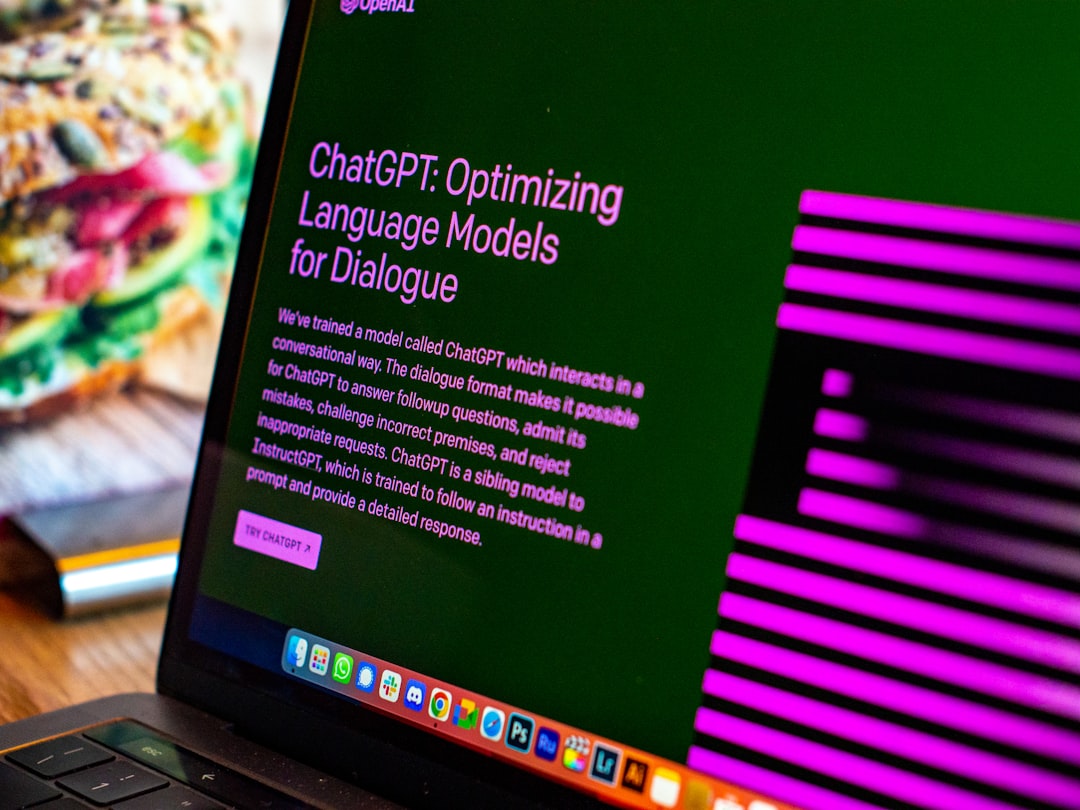Artificial Intelligence (AI) has emerged as a transformative force in various sectors, and healthcare is no exception. The integration of AI into medical diagnosis is reshaping how healthcare professionals approach patient care, enabling them to make more accurate and timely decisions. By leveraging vast amounts of data, machine learning algorithms, and advanced imaging techniques, AI systems can assist in diagnosing diseases with remarkable precision.
This technological evolution not only enhances the efficiency of healthcare delivery but also holds the promise of improving patient outcomes significantly. The potential of AI in medical diagnosis is vast, ranging from identifying rare diseases to streamlining routine check-ups. As healthcare systems worldwide grapple with increasing patient loads and the complexity of medical conditions, AI offers a solution that can alleviate some of these pressures.
By automating certain diagnostic processes, AI allows healthcare providers to focus on patient interaction and treatment, ultimately leading to a more holistic approach to healthcare. This article delves into specific applications of AI in medical diagnosis, highlighting its revolutionary impact on various fields, including dermatology and ophthalmology.
Key Takeaways
- AI is revolutionizing medical diagnosis by improving accuracy and efficiency in various areas such as skin cancer detection, early detection of eye diseases, and automated x-ray analysis.
- AI has the potential to prevent vision loss by enabling early detection of eye diseases, leading to timely intervention and treatment.
- Automated x-ray analysis using AI can significantly impact medical diagnosis by expediting the process and reducing the burden on healthcare professionals.
- While AI offers advantages such as improved accuracy and efficiency, it also has limitations such as the need for large datasets and potential biases in algorithms.
- The future of AI in medicine holds potential developments in personalized medicine and telemedicine, but also presents challenges such as ethical considerations and the need for regulatory oversight.
Skin Cancer Detection: How AI is Revolutionizing Diagnosis
Skin cancer detection is one of the most prominent areas where AI is making significant strides. Traditional methods of diagnosing skin cancer often rely on visual examinations by dermatologists, which can be subjective and prone to human error. However, AI algorithms trained on vast datasets of skin images can analyze lesions with remarkable accuracy.
These systems utilize deep learning techniques to identify patterns that may be indicative of malignancy, often outperforming human specialists in terms of diagnostic precision. One notable example is the use of convolutional neural networks (CNNs) in analyzing dermatoscopic images. These networks can be trained to recognize various types of skin lesions, including melanoma, basal cell carcinoma, and squamous cell carcinoma.
Studies have shown that AI systems can achieve diagnostic accuracy comparable to that of experienced dermatologists, making them invaluable tools in early detection efforts. By integrating AI into routine skin examinations, healthcare providers can enhance their diagnostic capabilities, leading to earlier interventions and improved patient prognoses.
Early Detection of Eye Diseases: The Role of AI in Preventing Vision Loss

The field of ophthalmology is another area where AI is proving to be a game-changer. Early detection of eye diseases such as diabetic retinopathy and age-related macular degeneration is crucial for preventing vision loss. Traditionally, these conditions are diagnosed through comprehensive eye exams that require specialized training and equipment.
However, AI-powered systems are now capable of analyzing retinal images with high accuracy, allowing for quicker and more efficient screenings. AI algorithms can process thousands of retinal images in a fraction of the time it would take a human expert. By identifying subtle changes in the retina that may indicate disease progression, these systems enable timely interventions that can preserve vision.
For instance, a study demonstrated that an AI model could detect diabetic retinopathy with an accuracy rate exceeding 90%, significantly reducing the burden on ophthalmologists and ensuring that patients receive the care they need promptly. This shift towards AI-assisted diagnostics not only enhances patient outcomes but also optimizes resource allocation within healthcare systems.
The Impact of Automated X-ray Analysis on Medical Diagnosis
Automated X-ray analysis represents another frontier where AI is making significant contributions to medical diagnosis. X-rays are one of the most commonly used imaging modalities in clinical practice, yet interpreting these images can be challenging due to the complexity and variability of human anatomy. AI algorithms trained on extensive datasets can assist radiologists by highlighting areas of concern and providing preliminary assessments, thereby streamlining the diagnostic process.
One of the key advantages of automated X-ray analysis is its ability to reduce diagnostic errors caused by fatigue or oversight. Radiologists often face immense workloads, leading to potential lapses in attention during image interpretation. AI systems can act as a second pair of eyes, flagging abnormalities such as fractures, tumors, or signs of pneumonia that may have been overlooked.
This collaborative approach not only enhances diagnostic accuracy but also allows radiologists to focus on more complex cases that require their expertise.
Advantages and Limitations of AI in Medical Diagnosis
While the advantages of AI in medical diagnosis are substantial, it is essential to acknowledge its limitations as well. One of the primary benefits is the ability to process vast amounts of data quickly and accurately. This capability enables healthcare providers to make informed decisions based on comprehensive analyses rather than relying solely on individual expertise.
Additionally, AI systems can continuously learn from new data, improving their performance over time and adapting to emerging medical knowledge. However, there are challenges associated with implementing AI in clinical settings. One significant limitation is the potential for bias in training data, which can lead to disparities in diagnostic accuracy across different populations.
If an AI system is trained predominantly on data from a specific demographic group, it may not perform as well when applied to individuals outside that group.
As healthcare providers increasingly incorporate AI into their practices, it is crucial to ensure that these systems are rigorously tested and validated to mitigate risks associated with misdiagnosis.
The Future of AI in Medicine: Potential Developments and Challenges

Looking ahead, the future of AI in medicine appears promising yet fraught with challenges that must be addressed. As technology continues to advance, we can expect even more sophisticated algorithms capable of diagnosing a broader range of conditions with greater accuracy. The integration of AI with other emerging technologies such as telemedicine and wearable devices could further enhance patient monitoring and early detection capabilities.
However, several challenges remain on this path toward widespread adoption. One significant hurdle is the need for regulatory frameworks that ensure the safety and efficacy of AI systems in clinical practice. As these technologies evolve rapidly, regulatory bodies must keep pace to establish guidelines that protect patients while fostering innovation.
Ethical Considerations in AI-Assisted Medical Diagnosis
The integration of AI into medical diagnosis raises important ethical considerations that must be carefully navigated. One primary concern revolves around patient consent and data privacy. As AI systems rely on large datasets for training and validation, ensuring that patient information is handled securely and ethically is paramount.
Healthcare providers must be transparent about how patient data is used and obtain informed consent before utilizing AI technologies. Moreover, there are ethical implications related to accountability in decision-making processes. When an AI system makes a diagnostic error, determining responsibility can be complex.
Should liability rest with the healthcare provider who relied on the AI’s assessment or with the developers of the technology? Establishing clear guidelines regarding accountability will be essential as AI becomes more integrated into clinical workflows.
The Role of AI in Improving Healthcare through Diagnosis
In conclusion, the role of AI in improving healthcare through diagnosis cannot be overstated. From enhancing skin cancer detection to revolutionizing eye disease screenings and automating X-ray analysis, AI technologies are reshaping how medical professionals approach diagnostics. The advantages offered by these systems—such as increased accuracy, efficiency, and the ability to process vast amounts of data—hold great promise for improving patient outcomes.
However, as we embrace this technological revolution, it is crucial to remain vigilant about the ethical considerations and challenges that accompany it. By fostering collaboration among stakeholders and establishing robust regulatory frameworks, we can harness the full potential of AI while ensuring that patient safety and equity remain at the forefront of medical practice. As we look toward the future, it is clear that AI will play an increasingly vital role in shaping the landscape of healthcare diagnostics for years to come.
A related article discussing the challenges and opportunities in the metaverse, particularly focusing on privacy and security concerns, can be found at this link. As AI continues to revolutionize various industries, including healthcare, it is important to consider the implications of integrating virtual technologies into our daily lives. The metaverse platforms and ecosystems, as explored in this article, offer a glimpse into the future of digital assets and virtual economies. The intersection of the metaverse and the real world, as discussed in this piece, highlights the potential for integrating physical and virtual spaces for enhanced experiences and interactions.
FAQs
What is AI?
AI, or artificial intelligence, refers to the simulation of human intelligence processes by machines, especially computer systems. These processes include learning, reasoning, and self-correction.
How does AI support diagnosis in medicine?
AI supports diagnosis in medicine by analyzing large amounts of medical data to identify patterns and make predictions. This can help in the early detection of diseases, including skin cancer and eye diseases, as well as in the analysis of medical imaging such as X-rays.
How does AI help in the detection of skin cancer?
AI helps in the detection of skin cancer by analyzing images of skin lesions and moles to identify potential signs of cancer. This can aid in the early detection of skin cancer, leading to better treatment outcomes.
How does AI aid in the early detection of eye diseases?
AI aids in the early detection of eye diseases by analyzing retinal images to identify signs of diseases such as diabetic retinopathy and age-related macular degeneration. Early detection can help in the timely treatment of these conditions, preventing vision loss.
How does AI support automated X-ray analysis?
AI supports automated X-ray analysis by analyzing X-ray images to identify abnormalities and potential signs of disease. This can help in the efficient triage of patients and the prioritization of those in need of further evaluation by healthcare professionals.











Leave a Reply